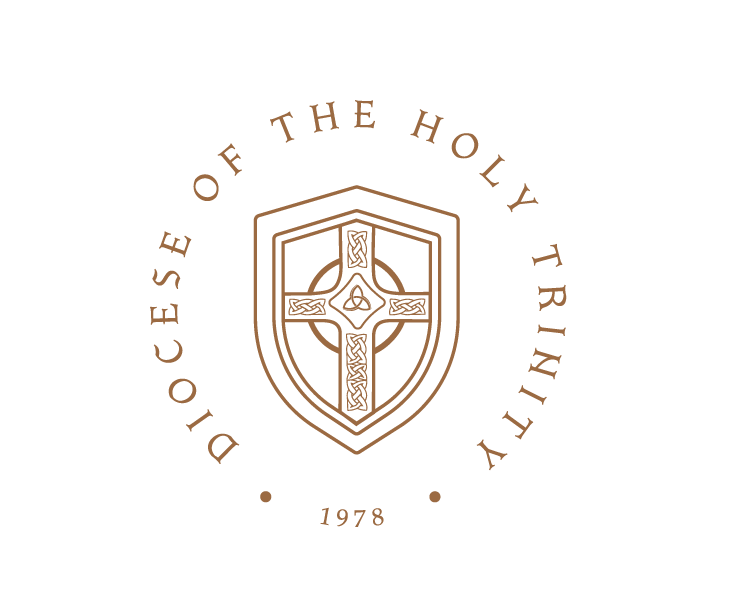Our History
The Diocese of the Holy Trinity (DHT) was formed in 1977 in response to the formal adoption of heretical beliefs and practices by the Episcopal Church at its annual convention in 1976. Faithful Anglicans were called to develop a separate structure in which to “contend earnestly for the faith which was once for all delivered to the saints” (Jude 1:3). A meeting was held in St. Louis in 1977. The “Affirmation of St.Louis” was adopted as a statement of commitment to the Faith. The Diocese of the Holy Trinity was formed in 1977 and Fr. James O. Mote, Rector of St. Mary’s Church, Denver Colorado was elected as the first bishop.
Fr. Mote was consecrated as a bishop in 1978. He was one of the original four bishops of what is known as “The Continuing Church.” The consecrations took place in Denver on January 28, 1978. A separate western diocese was eventually formed, The Diocese of the Pacific and Southwest (DPSW). There were two bishops of this separated diocese. The first was the Rt. Rev’d Richard Willars. Bishop Willars was rector of St. Mary Magdalene Church in Orange, CA. The second was the Rt. Rev’d Arthur David Seeland. After Bishop Seeland, the DPSW was overseen by a series of Episcopal Visitors, including The Rt. Rev’d John T. Cahoon and the Rt. Rev’d Presley Hutchings. During this time the DPSW was dissolved back into the DHT. In October of 2013, the Rt. Rev’d Dr. Stephen C. Scarlett was consecrated as Bishop of the DHT.
The Continuing Church and the DHT have now been in existence for over a biblical generation--over forty years. In its first generation, the original unified body became several separated bodies: The Anglican Catholic Church, The Anglican Church in America, The Anglican Province in America, The Anglican Province of Christ the King, and The Diocese of the Holy Cross. In recent years the fragmentation has been reversed. These churches (with the exception of the Anglican Province of Christ the King) have united to form what is known as the “Anglican Joint Synods” There have been two national joint meetings and a formal agreement of intercommunion has been signed.
One of the founding bishops of the Continuing Church Movement, Robert Morse, gave a sermon at the initial gathering of the Church in 1977 in St. Louis. He likened the formation of the Continuing Church by faithful Anglicans as a journey into the wilderness. He said:
We begin today a long march through the deserts of our time - but our movement is of the Spirit of God . . . We will be guided like the Hebrew children by a pillar of smoke by day and fire by night . . . What vision sustains us on this long journey - this pilgrimage of hardship? Only the love of God and our desire to share it. . . .We must all wait in the desert, for through this experience we as penitents will be cleansed.
God give us the strength that some day our movement might be as that of the early Christian desert Fathers who were more concerned with what God thought of them than what the world thought of them. Come with us, join us, march with us into the desert - for God calls us to Himself!
For of the parishes in our diocese have rich histories. St. Mary’s Denver was one of the original churches of our diocese and has maintained a faithful witness in the Denver area for almost a century. St. Joseph Parish in San Mateo was established in 1977 under Fr. John Cahoon (later ACC Archbishop). St. Mary Magdalene Church in Orange was founded in the early 1980s, while St. Matthew’s Church in Newport Beach was founded in 1981.
The Continuing Church has now entered its second generation. As we emerge from the wilderness, the vocation of the Diocese of the Holy Trinity is mission. The world has changed dramatically since our founding. The mid-twentieth-century western world, characterized by “modernity” and “Christendom,” has given way to a new world characterized by “postmodernity” and by a culture that is no longer friendly to Christian faith. The timeless faith must be articulated in new and creative ways to meet the challenges of contemporary mission. The mission of the DHT is to build upon the foundation laid by the first generation of faithful Anglicans and cultivate the renewal of the church for fruitful mission in its second generation.


